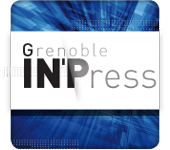 The idea of extended producer responsibility first shook up the relationship manufacturers have with their products, but they are now beginning to ask themselves how these products are used. Eco-design, which is a way of rethinking solutions that are more efficient by reducing their environmental impact, is fast becoming a catalyst for innovation with enormous potential. The innovation pathways are manifold and apply to all the stakeholders in a company as well as to suppliers.
The idea of extended producer responsibility first shook up the relationship manufacturers have with their products, but they are now beginning to ask themselves how these products are used. Eco-design, which is a way of rethinking solutions that are more efficient by reducing their environmental impact, is fast becoming a catalyst for innovation with enormous potential. The innovation pathways are manifold and apply to all the stakeholders in a company as well as to suppliers. Environmental impact therefore applies to a product's entire life cycle, from the extraction of the raw materials required to manufacture it to its disposal when it is no longer useful via the way it is produced and how it is used. In addition, a product does not have a single environmental impact but several environmental impacts: global warming, air pollution, energy consumption, the amount of waste generated, etc. These various non-reducing aspects, which are characteristic of environmental impact, raise questions at all levels of a company.
Eco-design aims to meet society's demands and anticipate the way they are likely to develop at the same time as helping to protect the environment. It uses methodologies that take environmental criteria into account when designing industrial products or common usage as well as trying to predict user scenarios. In fact, not only do products need to be eco-designed but also they need to be eco-used- because the environmental performance targeted by engineers can only be achieved in practice thanks to the user.
The environmental quality of a product is measured using eco-balances or life-cycle assessment (LCA). The first strategies for improving products consisted of replacing polluting materials with materials that had less impact on the environment; minimising energy consumption during the use phase; and end-of-life recycling to recover the material, thus combining economic and environmental savings.
In training its engineers, Grenoble INP has chosen to spread its eco-design teaching across its various courses as a way of promoting an integrated approach to eco-design and technologies. Accordingly, eco-design may be found in options ranging from, for example, materials to battery manufacturing processes via, of course, industrial engineering.
SUMMARY
- Editorial :The rise of eco-design
- Eco-design: a concept adopted by the world of business
- An approach supported by the authorities
- PIME: two-fold environmental expertise
- Neopost: "The ideal end of life for a product is to be born again'!"
- Schneider Electric: fifteen years of eco-design
- Soon all new ST products will be eco-designed
- A new life for lithium





